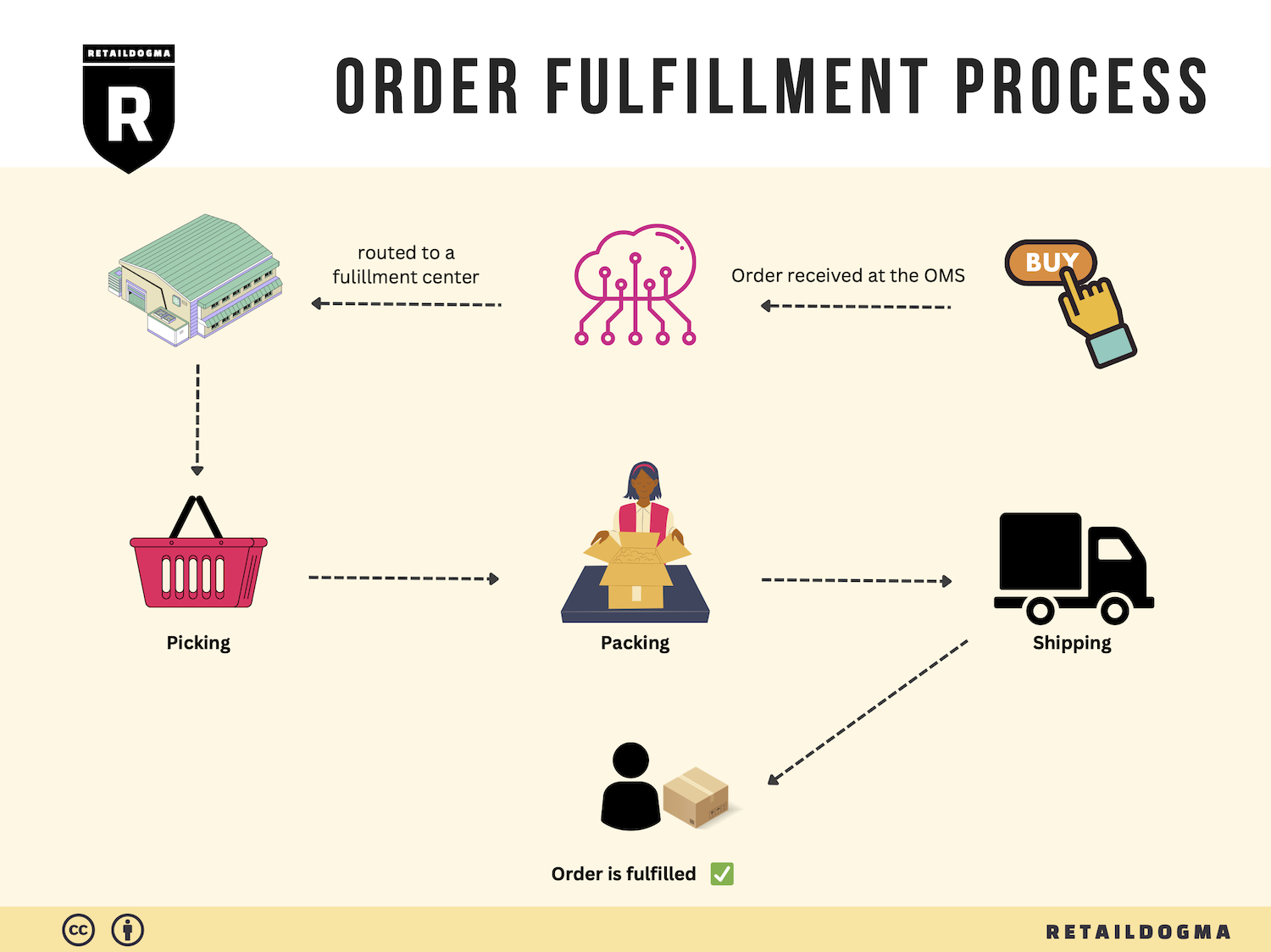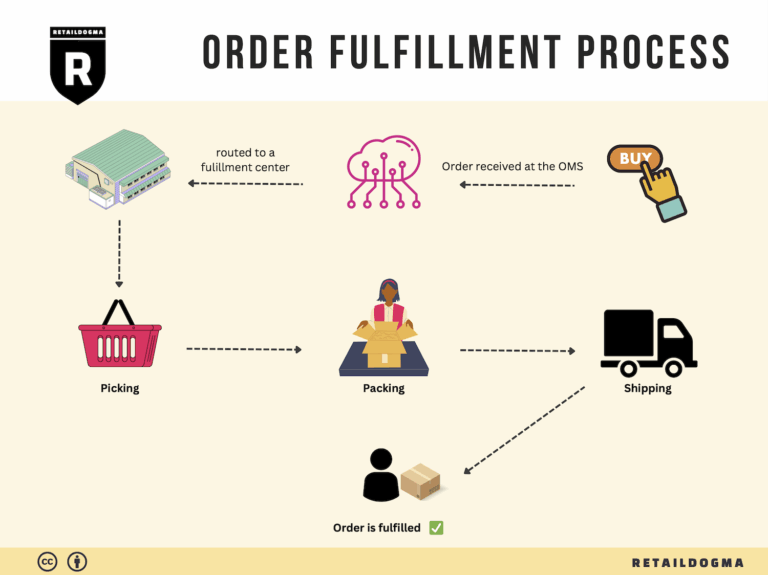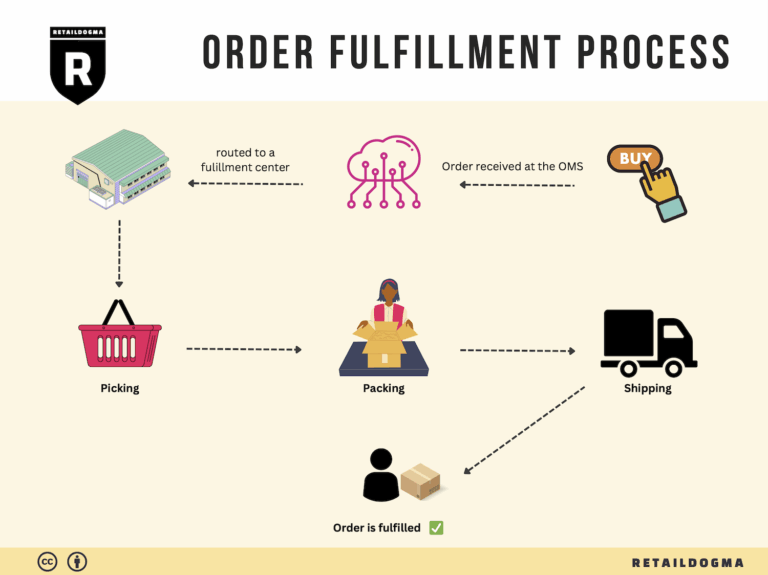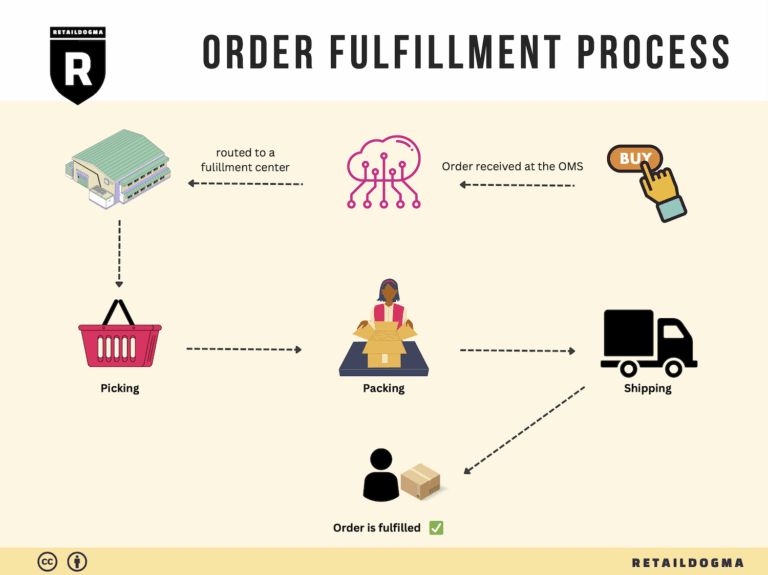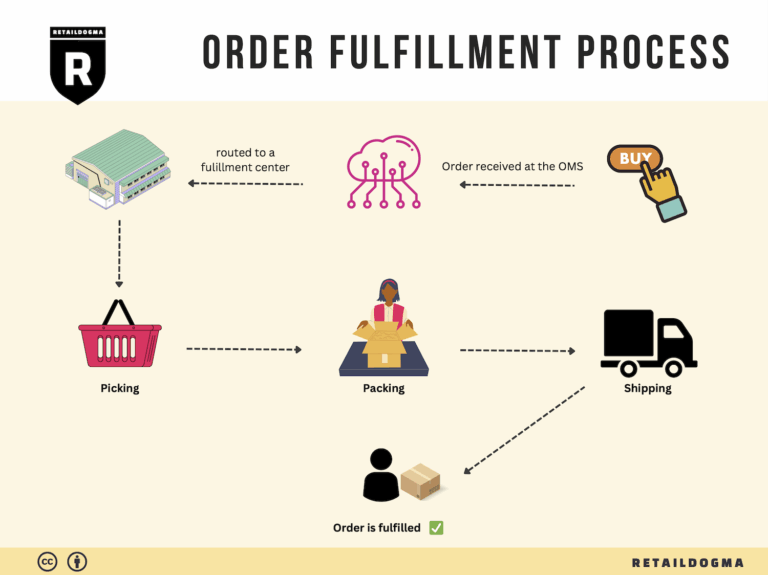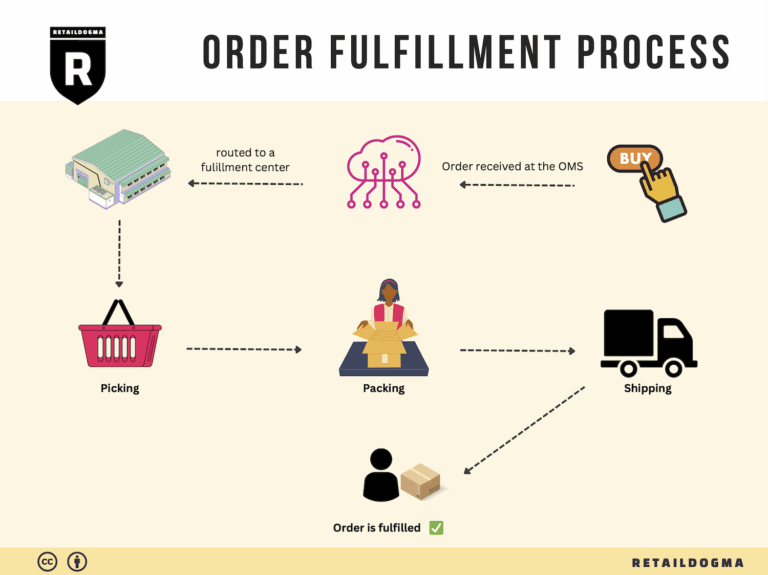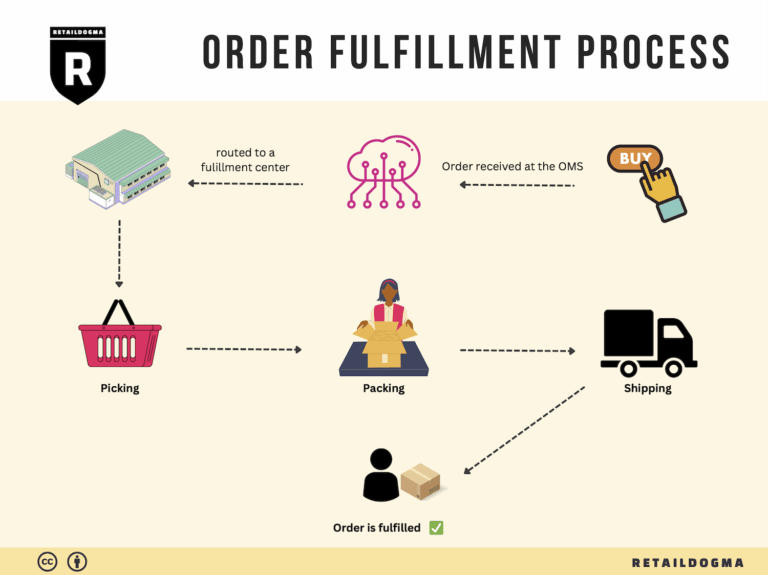How Order Fulfillment Works: A Step-by-Step Guide for Businesses
What is E-commerce Fulfillment? An Introduction for Growing Businesses
Understanding the Challenges of E-commerce Fulfillment
As an e-commerce business owner, you may find yourself overwhelmed with the complexities of packing and shipping orders. The excitement of growing sales can quickly turn into a logistical nightmare. Managing inventory, processing orders, and ensuring timely delivery are tasks that can consume valuable time and resources, pulling your focus away from what truly matters: scaling your business and enhancing customer satisfaction.
At its core, e-commerce fulfillment is the process of getting a product from your warehouse to your customer’s doorstep. This involves several critical steps, including order processing, picking, packing, shipping, and handling returns. For growing businesses, understanding this process and its implications is essential to maintaining a smooth operation and meeting customer expectations.
What This Guide Covers
In this guide, we will explore the various models of e-commerce fulfillment, including Third-Party Logistics (3PL) and Fulfillment by Amazon (FBA). Each model has its own set of advantages and challenges, and understanding these can help you make informed decisions that align with your business goals.
We will also delve into the core services offered by fulfillment partners, such as inventory management, order tracking, and shipping solutions. Knowing what to expect from a fulfillment provider is crucial when assessing potential partners.
Another important aspect we will cover is how to choose the right fulfillment partner. Factors such as location, technology integration, scalability, and customer service can significantly impact your fulfillment process. By evaluating these elements, you can find a partner that not only meets your current needs but also supports your future growth.
Finally, we will discuss pricing structures in e-commerce fulfillment. Understanding the costs associated with different fulfillment models will empower you to budget effectively and choose solutions that offer the best return on investment.
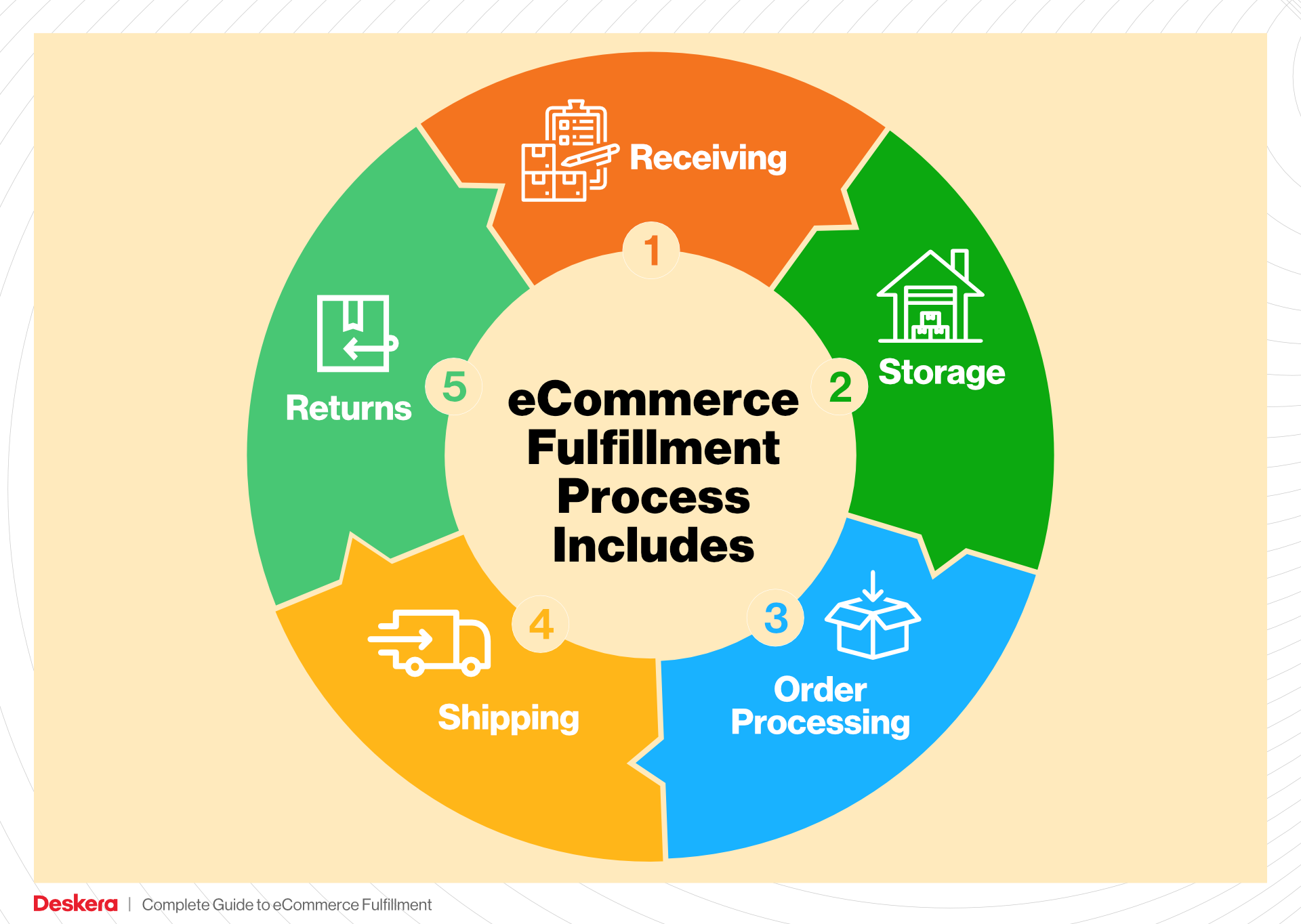
Empowering Smart Decisions
The goal of this guide is to empower you to make strategic decisions about your logistics operations. By gaining insight into the world of e-commerce fulfillment, you can streamline your processes, enhance customer satisfaction, and ultimately drive your business’s growth. Whether you’re a startup navigating your first orders or an established business looking to optimize your fulfillment strategy, this guide will provide the knowledge you need to succeed in the competitive e-commerce landscape.
What You’ll Learn In This Guide
- What is E-commerce Fulfillment? An Introduction for Growing Businesses
- The Order Fulfillment Process: From ‘Buy’ Button to Customer’s Door
- Comparing Fulfillment Models: In-House vs. 3PL vs. Dropshipping
- A Deep Dive into Amazon FBA: Pros, Cons, and Who It’s For
- Core Services Offered by Fulfillment Centers
- How to Choose a Fulfillment Partner: A 6-Point Checklist
- Understanding Fulfillment Pricing: A Breakdown of Common Fees
- Frequently Asked Questions (FAQs) about Fulfillment
- Conclusion: Is Outsourcing Fulfillment the Right Move for Your Business?
- Important Disclaimer
The Order Fulfillment Process: From ‘Buy’ Button to Customer’s Door
1. Receiving Inventory
The order fulfillment process begins with receiving inventory at the fulfillment center. This step is crucial as it lays the foundation for effective stock management and accurate order processing. When inventory arrives, it undergoes a thorough inspection to ensure that the quantity and quality match the purchase order. Each item is assigned a Stock Keeping Unit (SKU), which is a unique identifier that streamlines tracking and management.
Proper receiving procedures help prevent discrepancies, such as overages or shortages, which can lead to customer dissatisfaction. Efficient inventory reception allows businesses to maintain optimal stock levels, reducing the risk of stockouts and enabling timely fulfillment of customer orders. Additionally, this step ensures that all products are ready for storage and subsequent processing.
2. Warehouse Storage
Once inventory is received and verified, it is stored in the warehouse. Effective warehouse storage is vital for ensuring that products are organized and easily accessible. The layout of the warehouse should be designed to maximize space and facilitate quick retrieval. Items are typically categorized by SKU and organized in a systematic manner, which can include using shelving, bins, or pallets.
This step is critical because it directly impacts the efficiency of the picking process. By utilizing warehouse management systems (WMS), businesses can track inventory levels in real-time, monitor product availability, and manage stock replenishment. Proper storage practices not only reduce the time spent locating products but also enhance overall operational efficiency.
3. Order Picking
Order picking is the process of retrieving items from the warehouse based on customer orders. This step is where the efficiency of the entire fulfillment process can significantly impact customer satisfaction. Businesses often use pick lists—documents that outline the items to be retrieved for each order—to streamline this process.
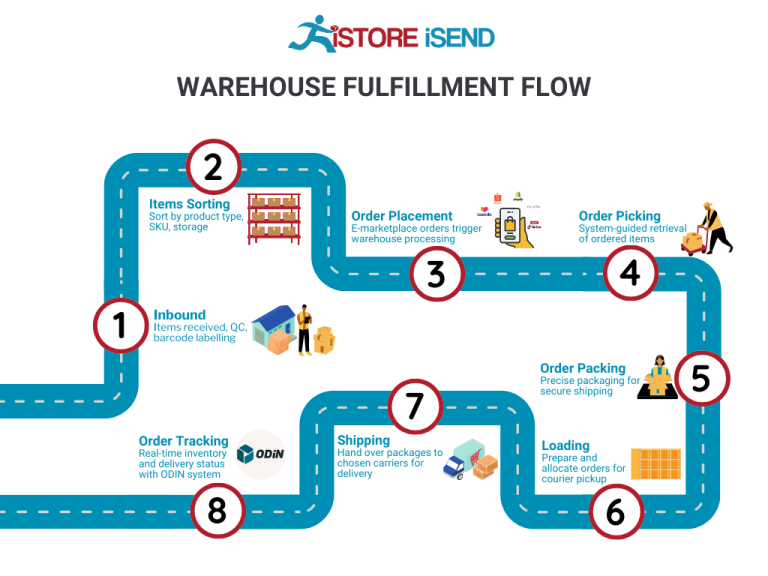
There are several picking methods, including single order picking, batch picking, and zone picking, each suited to different order volumes and warehouse layouts. Efficient picking reduces lead times, allowing businesses to fulfill orders more quickly. Moreover, accuracy is paramount during this step; errors in picking can lead to incorrect shipments, resulting in increased return rates and customer dissatisfaction.
4. Order Packing
Once items are picked, they move to the packing stage. Order packing is essential for ensuring that products are securely packaged for shipping. Proper packing protects items from damage during transit and can significantly influence the overall customer experience. Businesses should consider factors such as packaging materials, box sizes, and the arrangement of items within the box.
This step also involves generating shipping labels and packing slips, which provide necessary information for both the carrier and the customer. Utilizing packing software can help automate this process, reducing manual errors and speeding up fulfillment times. Effective packing not only minimizes shipping costs but also enhances the unboxing experience for customers, encouraging repeat business.
5. Shipping & Delivery
The final step in the order fulfillment process is shipping and delivery. Once orders are packed, they are handed over to carriers for transportation to the customer’s doorstep. This step is vital, as it directly affects delivery speed and customer satisfaction. Businesses must choose the right shipping methods based on factors like cost, delivery time, and destination.
Utilizing a Transportation Management System (TMS) can help automate shipping decisions, allowing businesses to select the most efficient routes and carriers based on real-time data. Timely and accurate delivery is crucial; in today’s e-commerce landscape, customers expect fast and reliable shipping. Efficient shipping not only fulfills customer expectations but also enhances brand reputation and loyalty.
In conclusion, mastering the order fulfillment process from receiving inventory to shipping and delivery is essential for e-commerce businesses aiming to scale their operations. By optimizing each step and utilizing technology, businesses can improve efficiency, reduce costs, and provide an exceptional customer experience that drives growth.
Comparing Fulfillment Models: In-House vs. 3PL vs. Dropshipping
Fulfillment Model Comparison
| Model | Who Handles Inventory | Best For (Business Stage) | Key Advantage | Key Disadvantage |
|---|---|---|---|---|
| In-House Fulfillment | Business (Own Warehouse) | Established/Scaling | Full control over inventory and process | High overhead costs and resource demand |
| Third-Party Logistics (3PL) | 3PL Provider | Growing/Scaling | Cost-effective, fast, and scalable | Less control over inventory and process |
| Dropshipping | Supplier/Manufacturer | Startup/Small Business | Low startup costs and no inventory holding | Lower profit margins and longer shipping times |
In-House Fulfillment
In-house fulfillment involves managing your own warehouse and logistics operations. This model is ideal for established businesses that have the resources and demand to justify the costs associated with maintaining a warehouse, staffing, and logistics management. The key advantage of in-house fulfillment is the complete control it provides over inventory and the fulfillment process. Businesses can tailor their operations to meet specific customer needs, ensure quality control, and respond quickly to changes in demand. However, this model comes with significant disadvantages, including high overhead costs associated with real estate, labor, and technology. Additionally, it requires substantial investment in infrastructure, which can be a barrier for smaller businesses or those just starting.
Third-Party Logistics (3PL)
Third-party logistics (3PL) providers, like TAGG Logistics, manage inventory and fulfillment operations for e-commerce businesses. This model is best suited for growing businesses that want to scale quickly without the heavy investment required for in-house fulfillment. The key advantage of using a 3PL is the cost-effectiveness and efficiency it offers. By leveraging the infrastructure and expertise of a 3PL, businesses can benefit from faster shipping times, reduced labor costs, and the ability to scale operations up or down based on demand. TAGG, for instance, provides seamless integration with various e-commerce platforms and offers multiple fulfillment centers to ensure that orders are shipped quickly—often within 1-2 days. However, a notable disadvantage is the reduced control over inventory and fulfillment processes, which can lead to potential discrepancies in order accuracy and customer experience.
Dropshipping
Dropshipping is a fulfillment model where the retailer does not hold inventory but instead relies on suppliers to fulfill orders directly to customers. This model is particularly attractive for startups and small businesses because it requires minimal upfront investment and no inventory holding costs. The key advantage of dropshipping is the low barrier to entry, allowing entrepreneurs to focus on marketing and customer acquisition without the complexities of inventory management. However, dropshipping comes with its own set of challenges. The most significant disadvantage is the lower profit margins, as retailers must pay suppliers a wholesale price, which can be significantly higher than if they were to purchase inventory in bulk. Additionally, shipping times can be longer, and the retailer has less control over product quality and delivery, potentially impacting customer satisfaction.
Conclusion
When choosing a fulfillment model, e-commerce business owners must carefully consider their specific needs, resources, and growth stage. In-house fulfillment offers the highest level of control but requires significant investment, making it suitable for established businesses. On the other hand, 3PL providers present a balanced approach, offering cost-effective solutions with scalability that can accommodate growth. Lastly, dropshipping serves as an excellent entry point for startups, although it may lead to challenges related to margins and customer experience. Understanding these models will enable businesses to align their logistics strategies with their operational goals effectively.
A Deep Dive into Amazon FBA: Pros, Cons, and Who It’s For
Understanding Fulfillment by Amazon (FBA)
Fulfillment by Amazon (FBA) is a service provided by Amazon that allows e-commerce sellers to store their products in Amazon’s fulfillment centers. Amazon takes care of storage, packaging, and shipping, as well as customer service and returns for these products. FBA is an attractive solution for many sellers looking to leverage Amazon’s extensive logistics network and customer base.
How FBA Works
The process of using FBA is straightforward:
-
Inventory Preparation: Sellers send their products to Amazon’s fulfillment centers. This involves labeling and packaging the items according to Amazon’s guidelines.
-
Storage: Once the inventory is received at the fulfillment center, it is stored until an order is placed. Amazon provides real-time inventory tracking through its Seller Central dashboard.
-
Order Processing: When a customer places an order for a product listed under FBA, Amazon handles the order fulfillment. This includes picking the item from the warehouse, packing it, and shipping it directly to the customer.
-
Customer Service: Amazon manages customer inquiries, returns, and refunds for FBA products, allowing sellers to focus on other aspects of their business.
-
Multi-Channel Fulfillment: Sellers can also use FBA to fulfill orders from their own websites or other sales channels, not just those made on Amazon.
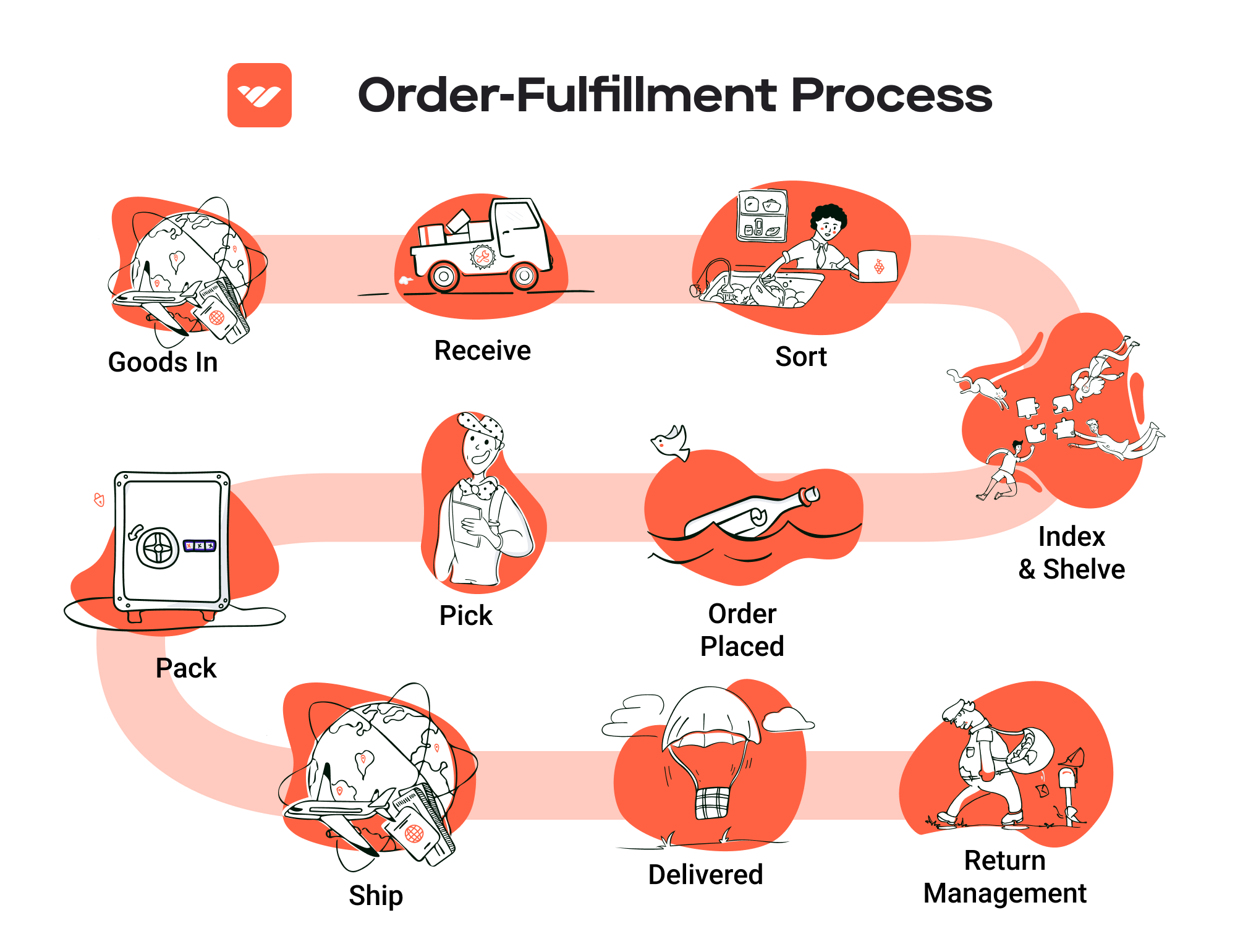
Pros of Using FBA
1. Prime Eligibility
One of the most significant advantages of FBA is that it automatically qualifies your products for Amazon Prime. This means your items can be marketed to millions of Prime members who value fast, free shipping, leading to potentially higher sales volumes.
2. Customer Trust
Products fulfilled by Amazon benefit from the trust and reliability associated with the Amazon brand. Customers often feel more comfortable purchasing items that are backed by Amazon’s customer service and return policies, which can lead to increased conversion rates for FBA sellers.
3. Multi-Channel Fulfillment
FBA allows sellers to fulfill orders from various sales channels, including their own e-commerce websites and other platforms. This flexibility can help businesses scale by providing a centralized logistics solution for all their sales activities.
4. Time Savings
By outsourcing logistics to Amazon, sellers can focus on growing their business instead of managing inventory and shipping. This can be particularly beneficial for small businesses and entrepreneurs who may not have the resources to handle fulfillment in-house.
5. Advanced Logistics
Amazon’s robust logistics network and advanced technology ensure efficient shipping and order processing. With fulfillment centers strategically located across the country, FBA can significantly reduce shipping times and costs.
Cons of Using FBA
1. High Fees
While FBA offers many benefits, it also comes with costs that can eat into your profits. Amazon charges storage fees for the space your inventory occupies and fulfillment fees for each unit sold. These costs can add up, especially for slow-moving products.
2. Strict Inventory Rules
Amazon has stringent inventory management policies, including limitations on how much inventory can be stored at their fulfillment centers. Sellers must carefully manage their stock levels to avoid long-term storage fees or restrictions on their accounts.
3. Commingling Risks
FBA products may be commingled, meaning that your inventory can be mixed with that of other sellers. This can lead to issues if a customer returns a damaged item or if there are quality concerns. In such cases, you may be held accountable for issues that are not directly related to your product.
4. Loss of Control
Outsourcing fulfillment means you have less control over the shipping process, packaging, and customer experience. Any issues that arise during fulfillment can reflect poorly on your brand, even if they are due to Amazon’s handling.
5. Complexity in Returns
While Amazon handles returns for FBA products, this can sometimes lead to complications for sellers. If a customer returns a product that is damaged or has missing parts, it may be difficult to recover losses, especially if the product was commingled.
Who is FBA Best For?
Fulfillment by Amazon is particularly well-suited for certain types of sellers:
-
Small to Medium-Sized Businesses: Companies that want to scale quickly without investing heavily in logistics infrastructure can benefit significantly from FBA.
-
Sellers with High-Volume Products: If you have a product that sells well and has predictable demand, the fees associated with FBA can be offset by the increased sales volume.
-
Brands Looking for Market Penetration: Newer brands aiming to penetrate the Amazon marketplace can leverage FBA to gain visibility and trust among customers.
-
Multi-Channel Sellers: Businesses that sell across various platforms can streamline their operations using FBA for order fulfillment, allowing them to focus on marketing and sales.
In conclusion, FBA offers a compelling solution for e-commerce sellers looking to leverage Amazon’s vast logistics network. While it has its drawbacks, the benefits—such as Prime eligibility, customer trust, and efficient order processing—often outweigh the challenges for many businesses. Careful evaluation of your business model and product types will help determine if FBA is the right fit for your e-commerce strategy.
Core Services Offered by Fulfillment Centers
Inventory Management & Warehousing
Inventory management and warehousing are fundamental services provided by fulfillment centers, ensuring that e-commerce businesses can efficiently store and manage their products. This service encompasses the organization, tracking, and control of inventory levels within the fulfillment center’s warehouse.
Fulfillment centers utilize advanced warehouse management systems (WMS) to maintain real-time visibility of stock levels, automate reordering processes, and manage inventory across multiple locations. This technology enables businesses to synchronize their inventory with their e-commerce platforms, providing accurate stock availability to customers and preventing overselling.
Benefits:
1. Enhanced Accuracy: Automated inventory tracking reduces human error, ensuring that businesses have precise information about stock levels.
2. Cost Efficiency: By optimizing storage space and managing inventory effectively, businesses can reduce holding costs and avoid excess inventory.
3. Improved Customer Experience: With real-time inventory updates, customers are less likely to encounter stockouts, leading to higher satisfaction and repeat purchases.
Pick and Pack Services
Pick and pack services are crucial for the order fulfillment process, where items are selected from inventory (picked) and prepared for shipment (packed) based on customer orders. Fulfillment centers employ efficient picking strategies, such as batch picking or zone picking, to streamline this process.
Once items are picked, they are carefully packed using appropriate materials to ensure they reach customers in perfect condition. This may include custom packaging solutions to enhance brand presentation and protect products during transit.
Benefits:
1. Speed and Efficiency: Fulfillment centers can process orders much faster than individual businesses, often shipping the same day an order is received. This rapid turnaround time is critical for meeting customer expectations in today’s fast-paced e-commerce environment.
2. Scalability: As e-commerce businesses grow, fulfillment centers can easily scale their pick and pack operations to handle increased order volumes without the need for businesses to invest in additional infrastructure.
3. Quality Control: Professional pick and pack services often include quality checks, reducing the risk of errors and ensuring that customers receive the correct items.
Kitting and Assembly
Kitting and assembly services involve grouping individual items together to create a single product or kit, which can be particularly beneficial for businesses offering subscription boxes, promotional bundles, or multi-component products. Fulfillment centers can handle the assembly of these kits, saving businesses valuable time and labor costs.
This service may include tasks such as assembling product sets, packaging items together, labeling, and ensuring that everything meets the specified requirements before shipment.
Benefits:
1. Customization: Kitting allows businesses to create unique product offerings that can enhance customer engagement and drive sales.
2. Efficiency: By outsourcing kitting to fulfillment centers, businesses can focus on core operations such as marketing and product development, rather than labor-intensive assembly tasks.
3. Reduced Shipping Costs: Bundled products can lead to lower shipping costs per item, which can be a significant advantage in competitive markets.
Returns Management (Reverse Logistics)
Returns management, also known as reverse logistics, is a critical service offered by fulfillment centers that helps businesses efficiently handle product returns. This service encompasses the entire process of managing returned goods, from receiving and inspecting returns to restocking or disposing of items.
Fulfillment centers can streamline the returns process by providing easy-to-follow return instructions, managing return shipping, and updating inventory systems to reflect returned items. This service is particularly important for e-commerce businesses, where return rates can be higher than in traditional retail.
Benefits:
1. Customer Retention: A smooth returns process enhances customer satisfaction, encouraging repeat business and positive reviews.
2. Cost Savings: Efficient returns management can minimize losses associated with returned products by enabling quick restocking or reselling of returned items.
3. Data Insights: Fulfillment centers can provide analytics on return reasons, helping businesses identify product issues or areas for improvement in their offerings.
In summary, partnering with a fulfillment center provides e-commerce businesses with essential services that enhance operational efficiency, improve customer satisfaction, and support scalable growth. By leveraging these core services, businesses can focus on their strategic objectives while ensuring that their logistics and fulfillment processes are managed effectively.
How to Choose a Fulfillment Partner: A 6-Point Checklist
Location & Warehouse Network
Why It’s Important:
The geographic location of a fulfillment partner’s warehouses can significantly impact shipping times and costs. A partner with strategically placed warehouses can ensure faster delivery to your customers, which is crucial in today’s fast-paced e-commerce environment.
Questions to Ask:
– Where are your fulfillment centers located, and how does this affect shipping times to my primary customer demographics?
– Do you offer multiple fulfillment locations, and can I choose which center to fulfill my orders from?
– What is your average shipping time to key regions, and how do you manage shipping costs?
Technology & Integrations
Why It’s Important:
A robust technology platform is vital for seamless operations. Your fulfillment partner should be able to integrate with your existing e-commerce systems, allowing for real-time inventory management, order processing, and shipping updates. Efficient technology can reduce errors and improve customer satisfaction.
Questions to Ask:
– What warehouse management system (WMS) do you use, and how does it integrate with my e-commerce platform?
– Can you provide real-time inventory updates, and how are these communicated to my systems?
– What types of reporting and analytics do you offer to help me track order fulfillment performance?
Specializations
Why It’s Important:
Depending on your product line, you may require specialized services such as cold storage, handling oversized items, or managing hazardous materials. Understanding your fulfillment partner’s capabilities in these areas can prevent complications down the road.
Questions to Ask:
– Do you have experience handling products similar to mine, and what specific services do you offer for these items?
– Can you accommodate seasonal fluctuations in inventory, and how do you manage specialized storage needs?
– What measures do you have in place for product safety and compliance, especially for specialized items?
Scalability & Capacity
Why It’s Important:
As your business grows, your fulfillment needs will change. A good partner should be able to scale operations up or down based on your current demand, ensuring you don’t face stockouts during peak seasons or overpay during slower periods.
Questions to Ask:
– How do you handle fluctuations in order volume, especially during peak seasons?
– Can you accommodate a rapid increase in order volume if my sales grow unexpectedly?
– What is your capacity for handling returns, and how do you manage reverse logistics?
Pricing and Contracts
Why It’s Important:
Understanding the pricing structure and contract terms is crucial for managing your budget and ensuring transparency. Hidden fees can quickly erode your profit margins, so it’s essential to clarify all costs upfront.
Questions to Ask:
– Can you provide a detailed breakdown of your pricing structure, including any hidden fees for services like storage, packaging, and returns?
– What are the contract terms, and is there flexibility in terms of scaling up or down based on my needs?
– How do you handle pricing adjustments over time, and what factors could lead to increased costs?
Customer Support & Reviews
Why It’s Important:
Reliable customer support can make or break your relationship with a fulfillment partner. Quick response times and effective problem-solving are crucial for maintaining your business operations. Additionally, reviews and testimonials can provide insights into the partner’s reliability and service quality.
Questions to Ask:
– What customer support options do you offer, and what are your typical response times?
– Can you provide references or case studies from businesses similar to mine?
– How do you handle issues that arise during the fulfillment process, and what is your process for addressing customer complaints?
Conclusion
Choosing the right fulfillment partner is a critical decision that can significantly impact your e-commerce business’s success. By carefully evaluating these six key areas—Location & Warehouse Network, Technology & Integrations, Specializations, Scalability & Capacity, Pricing and Contracts, and Customer Support & Reviews—you’ll be well-equipped to make an informed choice that aligns with your operational needs and growth objectives. Always remember to conduct thorough due diligence and ask the right questions to ensure you find a partner who can support your long-term goals.
Understanding Fulfillment Pricing: A Breakdown of Common Fees
Initial Setup Fees
When partnering with a fulfillment center, such as TAGG Logistics, one of the first costs you may encounter is the initial setup fee. This fee covers the integration of your e-commerce platform with the fulfillment provider’s systems. The setup process often includes configuring software to manage orders, inventory synchronization, and API integrations.
The calculation of this fee can vary significantly based on the complexity of your business operations and the number of sales channels you utilize. Basic setups might incur a one-time fee ranging from a few hundred to several thousand dollars, while more complex configurations, especially for businesses with custom solutions or multiple sales channels, can be on the higher end. It’s important to clarify what is included in the setup fee to avoid unexpected costs.
Receiving Fees
Receiving fees are charged when your inventory arrives at the fulfillment center. This fee compensates the provider for unloading, inspecting, and entering your goods into their inventory management system.
Typically calculated per shipment or per pallet, receiving fees can range from $20 to $50 per pallet, depending on the fulfillment center and the complexity of the receiving process. If your inventory arrives in mixed pallets or requires additional handling (like quality checks or repackaging), additional charges may apply. To keep costs in check, streamline your shipping processes to minimize the complexity of receiving.
Storage Fees (per pallet/bin)
Storage fees are incurred for the space your inventory occupies within the fulfillment center. These fees can be calculated on a monthly basis and are often based on the number of pallets or bins your products occupy.
Rates can vary widely, generally ranging from $10 to $30 per pallet per month, depending on the facility’s location, the demand for storage space, and the size of the products. For businesses with large inventories or seasonal fluctuations, it’s crucial to monitor stock levels closely to avoid unnecessary storage fees. Consider negotiating long-term agreements for lower rates if you anticipate sustained storage needs.
Pick & Pack Fees (per item/order)
Pick and pack fees are a critical component of fulfillment pricing, encompassing the labor involved in retrieving items from inventory and packaging them for shipment. These fees are typically charged per item or per order, depending on the fulfillment center’s pricing structure.
For instance, a typical pick fee might range from $0.50 to $2.00 per item, while packing fees can add another $1.00 to $3.00 per order. The total cost can increase if your orders contain multiple items or require special packaging. To optimize these costs, consider consolidating orders when possible, as this can reduce the number of picks and packs needed.
Shipping Fees
Shipping fees cover the cost of delivering your products to customers. These fees can vary based on several factors, including the shipping method (standard, expedited, etc.), the weight and dimensions of the package, and the destination.
Fulfillment centers like TAGG Logistics often have established relationships with carriers, which can help reduce shipping costs through negotiated rates. Shipping fees may also include additional charges for services like insurance or signature confirmation. To get a clearer picture of your shipping costs, utilize the fulfillment center’s transportation management system, which can automate shipping decisions based on criteria you set, helping you balance cost and speed.
Tips for Getting an Accurate Quote
-
Be Transparent: Provide detailed information about your product types, order volumes, and anticipated growth to get the most accurate quote.
-
Understand Fee Structures: Ask for a breakdown of all potential fees and their calculation methods. This will help you identify any hidden costs.
-
Negotiate: Don’t hesitate to discuss pricing. Many fulfillment centers are open to negotiation, especially if you can commit to a long-term partnership.
-
Consider Seasonal Fluctuations: If your business experiences seasonal spikes in sales, ensure the fulfillment center can accommodate these fluctuations without incurring excessive fees.
-
Request a Trial Period: If possible, negotiate a trial period to assess the fulfillment center’s efficiency and pricing structure before committing to a long-term contract.
By understanding these common fulfillment pricing models and following these tips, you can better manage your logistics costs and make informed decisions that support your business growth.
Frequently Asked Questions (FAQs) about Fulfillment
1. What is TAGG Logistics’ order fulfillment process?
TAGG Logistics employs a streamlined three-step fulfillment process:
1. Order to Warehouse: Integration with your e-commerce platform allows for real-time order processing.
2. Warehouse to Truck: TAGG uses advanced warehouse management technology to pick and pack orders efficiently.
3. Truck to Door: Orders are shipped using TAGG’s transportation management system to ensure timely delivery, typically within 1-2 days.
2. How do I integrate my e-commerce platform with TAGG Logistics?
TAGG offers seamless integration with various e-commerce platforms. You can either use their pre-built API for popular platforms or customize an integration for your specific system. This enables real-time order management, inventory synchronization, and efficient communication between your system and TAGG’s fulfillment center.
3. What is the difference between a warehouse and a fulfillment center?
A warehouse primarily focuses on storing goods, while a fulfillment center specializes in processing orders and shipping products directly to customers. Fulfillment centers like TAGG Logistics provide additional services such as picking, packing, and shipping, along with technology to manage inventory and orders efficiently.
4. What is a 3PL (Third-Party Logistics)?
A 3PL is a service provider that manages logistics operations for businesses, including warehousing, order fulfillment, transportation, and distribution. TAGG Logistics is a 3PL that offers comprehensive fulfillment services to help e-commerce businesses scale by streamlining their logistics processes.
5. How much do fulfillment services cost?
Fulfillment costs vary based on factors such as order volume, inventory storage needs, and shipping destinations. TAGG Logistics provides customized pricing based on your specific requirements. It is best to contact them directly for a detailed quote tailored to your business needs.
6. What is the average shipping time with TAGG Logistics?
TAGG Logistics typically delivers orders within 1-2 days across the U.S., thanks to their strategically located fulfillment centers. This quick turnaround helps enhance customer satisfaction and repeat business.
7. Can TAGG Logistics handle returns management?
Yes, TAGG Logistics offers returns management services, allowing you to efficiently process returns and exchanges. This service includes handling returned items, updating inventory levels, and providing customers with the necessary support for their returns.
8. What e-commerce platforms does TAGG Logistics support?
TAGG Logistics integrates with a wide range of e-commerce platforms, including popular systems like Shopify, WooCommerce, Magento, and many others. They can also accommodate custom systems, ensuring that businesses can connect seamlessly with their fulfillment services.
9. How does TAGG ensure inventory accuracy?
TAGG Logistics utilizes advanced warehouse management systems to track inventory levels in real-time. This synchronization allows for accurate stock counts, minimizes errors, and ensures that businesses are always aware of their inventory status.
10. What types of products can TAGG Logistics fulfill?
TAGG Logistics can handle a diverse range of products, from small items to large goods. They cater to various industries, including retail, subscription boxes, and online marketplaces, making them a versatile option for e-commerce businesses of all sizes.
Conclusion: Is Outsourcing Fulfillment the Right Move for Your Business?
Evaluating the Benefits of Outsourcing Fulfillment
In today’s fast-paced e-commerce landscape, outsourcing fulfillment can be a game changer for businesses looking to scale efficiently. By leveraging a fulfillment service, such as TAGG Logistics, you can save significant time and resources that would otherwise be spent on managing logistics internally. This allows you to focus on core business activities, like marketing and product development, rather than getting bogged down in the complexities of order processing and shipping.
One of the most compelling advantages of partnering with a fulfillment center is scalability. As your business grows, so do your logistics needs. A third-party logistics provider (3PL) can seamlessly accommodate fluctuations in order volume, whether you’re experiencing seasonal spikes or launching new products. This flexibility means you can expand your operations without the headache of investing in additional infrastructure or staff.
Moreover, outsourcing to experts in the field ensures that your logistics processes are handled by professionals who specialize in fulfillment. With advanced technology and systems in place, such as TAGG’s warehouse management and transportation management systems, you can expect faster shipping times, optimized inventory management, and enhanced customer satisfaction. This expertise not only improves your operational efficiency but also helps you meet customer expectations for speed and reliability.
Choosing the Right Partner for Growth
However, not all fulfillment partners are created equal. It’s crucial to select a provider that aligns with your business goals and can support your growth trajectory. Take the time to assess potential partners based on their technology, service offerings, and ability to integrate with your existing systems.
Call to Action
Now is the perfect time to evaluate your current shipping and fulfillment processes. Conduct an audit to identify inefficiencies and determine whether a fulfillment partner could enhance your operational capabilities. By taking this strategic step, you position your business for sustainable growth and success in the ever-evolving e-commerce environment. Don’t hesitate—consider reaching out to a fulfillment expert today to explore how outsourcing can transform your logistics operations.
Important Disclaimer
⚠️ Important Disclaimer
The information in this guide is for educational purposes. Fulfillment services, pricing, and platform features change frequently. Always conduct your own due diligence and consult with providers directly before making business decisions.
